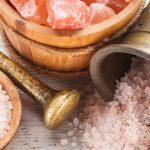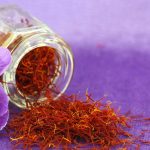6 natural tooth whitening methods
You know that smile you see in toothpaste ads. Well, this is something you do not get without investing time and money in more or less sophisticated dental procedures. However, is it advisable to get bright white teeth using methods which in the long run might affect your tooth enamel? If you are not really a fan of these procedures and you do not like the special gels available in drugstores, you may try nearby remedies and use natural products to get whiter teeth. Some of these methods have been tested, with remarkable results.
1. Clean your teeth with dental floss
“Tell me something I don’t know”, you might say. What you do not know, maybe, is that flossing– a must in the oral hygiene routine – maintains a nice white colour. After correctly brushing your teeth with toothpaste, use dental floss to remove the food fragments and bacteria that might turn into dental plaque, which would make your teeth appear dull and uncared for and, eventually, get a darker shade. Some dentists consider flossing more efficient than brushing and recommend doing it every day.
2. Rinse your mouth with essential oil
This is a very popular Ayurvedic technique. As uncomfortable as it might seem, it is a very effective practice, so it is worth trying. How do you do it? You take one spoonful of sesame, coconut or olive oil and rinse your mouth for 15 minutes. Do not swallow it! Coconut oil may clog drainpipes, so avoid disposing of it in the sink or toilet and use a trash bin instead. Recent studies confirm that using coconut oil prevents cavities and reduces mouth bacteria and infections.
3. Clean your teeth with baking soda
Brushing your teeth with baking soda is an effective remedy against yellow teeth, as baking soda is not only a first-rate natural cleanser, but also a harmless abrasive, and removes tooth stains successfully. Brush your teeth as you normally do every night, then put baking soda directly on your toothbrush and clean your teeth, but avoid overusing this practice! To prevent tooth enamel damage, it is recommended that you limit the use of baking soda to two or three times a week.
4. Use hydrogen peroxide
An antibacterial liquid consisting of nothing but water and oxygen, hydrogen peroxide is recommended for oral hygiene due to its excellent bleaching properties. It can even change the colour of a tooth in a few weeks. However, rinsing with hydrogen peroxide may cause gum irritation, especially when the concentration level exceeds 3%. Anyway, you should ask for a specialist’s advice before starting to use this method.
5. Eat tooth-friendly fruits: apples and pineapples
They say an apple a day keeps the doctor away. This is because the malic acid found in apples stimulates the production of saliva, which washes away mouth acids. Likewise, toothpaste containing bromelain, a protein extract derived from pineapple, helps whiten teeth. As obvious as this might seem, there is no research to confirm that eating these fruits helps us get whiter teeth. Healthier – maybe. As for the famous strawberry and baking soda mixture, several studies have shown that this method not only has no whitening effects whatsoever, but, because of the citric acid contained in strawberries, it may result in tooth enamel deterioration.
6. Be careful what you eat
We already know that fruits such as blueberries, cranberries and blackberries, as well as coffee, red wine and soda water are not best friends with clean white teeth, which does not mean that you should quit them completely. You just have to consume them in moderation. If you cleanse your mouth immediately after consuming them, you will reduce the odds that your tooth enamel will get affected. Smoking, on the other hand, is a completely different story, as this unhealthy habit, in addition to staining your teeth beyond repair, damages and penetrates your root canals, eroding tooth enamel.

6 natural tooth whitening methods by Technology for Life is licensed under a Creative Commons Attribution-NonCommercial-NoDerivatives 4.0 International License.

 Previous Post
Previous Post Next Post
Next Post



